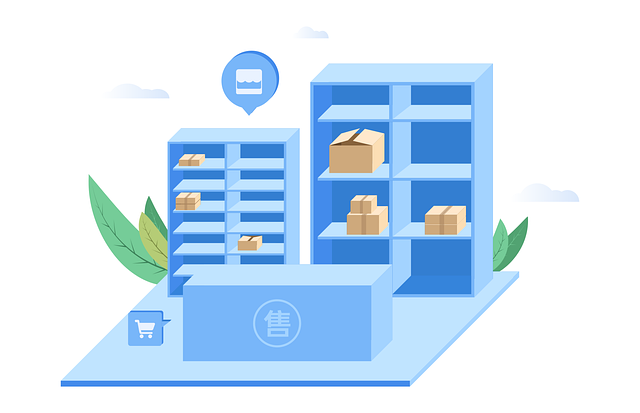Implementing an AI chatbot on an e-commerce website involves considering several key factors, including chatbot features, integration requirements, interaction volumes, and ongoing maintenance needs, all of which impact pricing. Development complexity, specific features, development approach, and long-term operational expenses are crucial for determining the cost. Businesses can choose between open-source or commercial chatbots, each with unique advantages; commercial options offer scalability, support, and ready functionality, while open-source provides flexibility and community support at lower costs. Chatbots enhance customer experience, drive sales, and provide valuable data insights, making them a strategic investment for e-commerce success.
“Unraveling the cost of AI chatbots has never been more crucial, especially for ecommerce businesses seeking enhanced customer engagement. This comprehensive guide dives into the factors influencing pricing, from development and deployment to ongoing maintenance. We explore specific considerations for integrating chatbots into ecommerce websites, weigh open-source vs. commercial solutions, and highlight long-term ROI potential. By understanding these aspects, you’ll be equipped to make informed decisions about implementing an AI chatbot to drive your online store’s success.”
- Understanding the Factors Influencing Chatbot Pricing
- Cost Breakdown: Development, Deployment, and Maintenance
- Ecommerce-Specific Considerations for AI Chatbots
- Open-Source vs. Commercial Solutions: Weighing Your Options
- Long-Term ROI: Justifying the Investment in Chatbots
Understanding the Factors Influencing Chatbot Pricing

When determining the cost of an AI chatbot, several factors come into play, each significantly influencing the final pricing. For instance, the complexity and sophistication of the desired chatbot for an ecommerce website can dramatically affect the price tag. Advanced chatbots with natural language processing (NLP) capabilities, capable of understanding and responding to customer queries in a human-like manner, tend to be more expensive than basic rule-based bots.
Additionally, the integration requirements, volume of expected interactions, and ongoing maintenance needs are crucial considerations. Chatbots designed for ecommerce websites must seamlessly integrate with existing systems like inventory management, customer relationship management (CRM), and payment gateways. High interaction volumes necessitate scalable infrastructure, while regular updates and customization may incur recurring costs.
Cost Breakdown: Development, Deployment, and Maintenance

The cost of deploying a chatbot for an e-commerce website isn’t a straightforward answer, as it varies greatly depending on several factors. At its core, developing a chatbot involves programming, data preparation, and training models, which can be done in-house or outsourced to specialized developers at varying rates. The complexity and featureset of the chatbot play a significant role—a simple rule-based bot is less expensive than an AI-driven conversational assistant capable of understanding natural language queries.
Once developed, deploying the chatbot on an e-commerce platform requires infrastructure costs, including hosting, processing power for real-time interactions, and storage for user data. Ongoing maintenance involves regular updates to keep the chatbot’s knowledge base current, bug fixes, and improvements based on user feedback. This ongoing support is crucial for maintaining a high-performing chatbot that provides value to customers, contributing significantly to long-term operational expenses.
Ecommerce-Specific Considerations for AI Chatbots

When implementing a chatbot for an ecommerce website, businesses must consider several unique factors that influence cost. One key aspect is integration; seamless connection between the chatbot and existing sales channels is essential but may require specialized development and ongoing maintenance. Ecommerce-specific features like product recommendations, inventory updates, and order tracking also add complexity and contribute to overall expenses. These chatbots often demand more advanced natural language processing (NLP) capabilities to handle customer inquiries effectively regarding product details, availability, and returns policies.
Additionally, the scalability of the chatbot is critical; as an ecommerce business grows, so should its virtual assistant. This may necessitate investments in cloud infrastructure and robust AI models capable of managing increased user loads without compromising performance or accuracy. Moreover, continuous training and data feeding are necessary to keep the chatbot up-to-date with product line changes, new promotions, and evolving customer preferences, ensuring it remains a valuable asset for driving sales and enhancing the shopping experience.
Open-Source vs. Commercial Solutions: Weighing Your Options

When considering implementing a chatbot for your e-commerce website, one key decision point is whether to opt for an open-source or commercial solution. Open-source chatbots offer a range of benefits, including transparency in code, flexibility to customize, and community support. They are often free or low cost and can be integrated into existing systems with relative ease. However, they may require more technical expertise to configure and maintain compared to commercial options.
On the other hand, commercial chatbot solutions come at a price but offer robust features, continuous updates, and dedicated customer support. These platforms typically provide pre-built templates suitable for various industries, including e-commerce, which can significantly speed up deployment time. They are ideal for businesses that lack internal technical capabilities or prefer not to tinker with code. Commercial options often scale better as your business grows, ensuring a more future-proof investment.
Long-Term ROI: Justifying the Investment in Chatbots

Implementing an AI chatbot on your e-commerce website is a strategic investment that offers significant long-term returns. While initial setup costs vary based on complexity and features, chatbots provide a powerful tool to enhance customer experience and drive sales. By handling common inquiries, providing 24/7 support, and offering personalized product recommendations, chatbots reduce response times and operational costs for businesses.
This technology’s ability to collect valuable customer data also contributes to its ROI. Analyzing chatbot interactions can offer insights into consumer behavior, allowing retailers to refine marketing strategies and improve inventory management. As e-commerce continues to evolve, integrating AI chatbots becomes a competitive advantage, ensuring businesses stay ahead in the market while offering an efficient and engaging online shopping experience.
When considering implementing an AI chatbot, especially for your ecommerce website, it’s crucial to balance upfront costs with long-term return on investment (ROI). Pricing varies widely based on factors like development complexity, deployment needs, and ongoing maintenance. Ecommerce-specific chatbots may require integration with existing systems and unique conversational flows, impacting the overall cost. Evaluating open-source solutions versus commercial options is essential to find a scalable, cost-effective solution that aligns with your budget. Ultimately, investing in an AI chatbot can drive customer engagement, enhance support, and boost sales, making it a strategic decision for ecommerce success.
